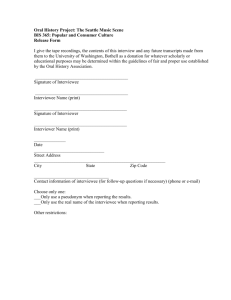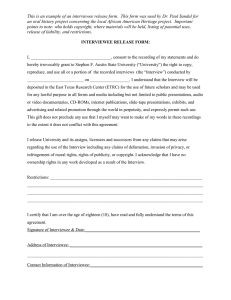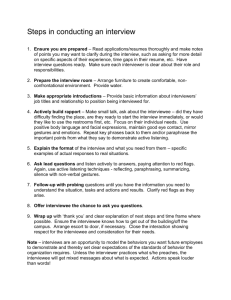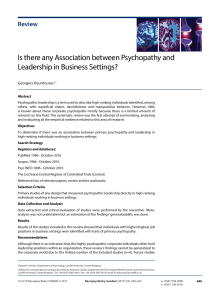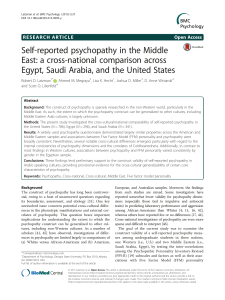Centennial Honors College Western Illinois University Undergraduate Research Day 2014
advertisement
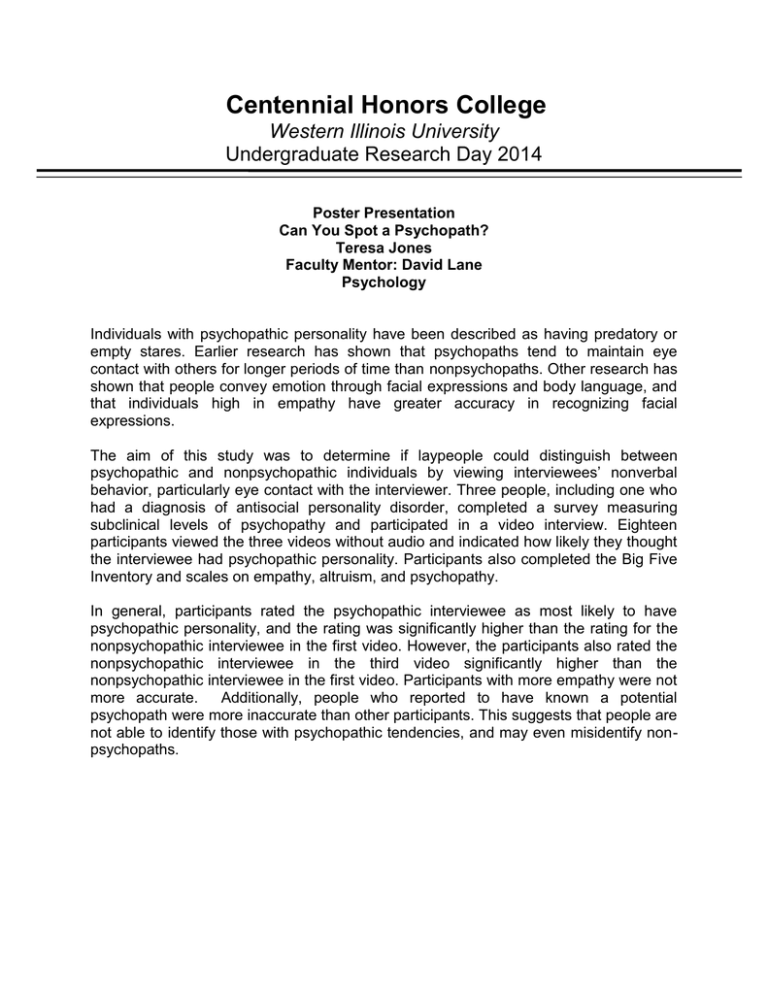
Centennial Honors College Western Illinois University Undergraduate Research Day 2014 Poster Presentation Can You Spot a Psychopath? Teresa Jones Faculty Mentor: David Lane Psychology Individuals with psychopathic personality have been described as having predatory or empty stares. Earlier research has shown that psychopaths tend to maintain eye contact with others for longer periods of time than nonpsychopaths. Other research has shown that people convey emotion through facial expressions and body language, and that individuals high in empathy have greater accuracy in recognizing facial expressions. The aim of this study was to determine if laypeople could distinguish between psychopathic and nonpsychopathic individuals by viewing interviewees’ nonverbal behavior, particularly eye contact with the interviewer. Three people, including one who had a diagnosis of antisocial personality disorder, completed a survey measuring subclinical levels of psychopathy and participated in a video interview. Eighteen participants viewed the three videos without audio and indicated how likely they thought the interviewee had psychopathic personality. Participants also completed the Big Five Inventory and scales on empathy, altruism, and psychopathy. In general, participants rated the psychopathic interviewee as most likely to have psychopathic personality, and the rating was significantly higher than the rating for the nonpsychopathic interviewee in the first video. However, the participants also rated the nonpsychopathic interviewee in the third video significantly higher than the nonpsychopathic interviewee in the first video. Participants with more empathy were not more accurate. Additionally, people who reported to have known a potential psychopath were more inaccurate than other participants. This suggests that people are not able to identify those with psychopathic tendencies, and may even misidentify nonpsychopaths.
